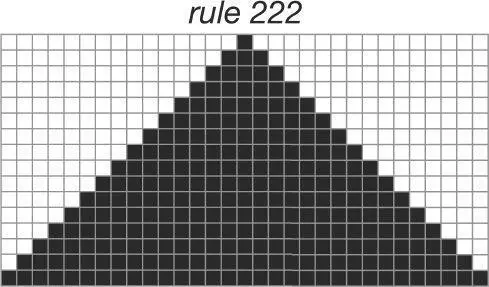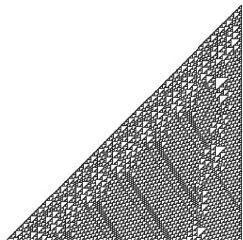I would add several points here. The concept of free will—and responsibility, which is a closely aligned idea—is useful, and indeed vital, to maintaining social order, whether or not free will actually exists. Just as consciousness clearly exists as a meme, so too does free will. Attempts to prove its existence, or even to define it, may become hopelessly circular, but the reality is that almost everyone believes in the idea. Very substantial portions of our higher-level neocortex are devoted to the concept that we make free choices and are responsible for our actions. Whether in a strict philosophical sense that is true or even possible, society would be far worse off if we did not have such beliefs.
Furthermore, the world is not necessarily determined. I discussed above two perspectives on quantum mechanics, which differ with respect to the relationship of quantum fields to an observer. A popular interpretation of the observer-based perspective provides a role for consciousness: Particles do not resolve their quantum ambiguity until observed by a conscious observer. There is another split in the philosophy of quantum events that has a bearing on our discussion of free will, one that revolves around the question: Are quantum events determined or random?
The most common interpretation of a quantum event is that when the wave function constituting a particle “collapses,” the particle’s location becomes specific. Over a great many such events, there will be a predictable distribution (which is why the wave function is considered to be a probability distribution), but the resolution for each such particle undergoing a collapse of its wave function is random. The opposing interpretation is deterministic: specifically, that there is a hidden variable that we are unable to detect separately, but whose value determines the particle’s position. The value or phase of the hidden variable at the moment of the wave function collapse determines the position of the particle. Most quantum physicists seem to favor the idea of a random resolution according to the probability field, but the equations for quantum mechanics do allow for the existence of such a hidden variable.
Thus the world may not be determined after all. According to the probability wave interpretation of quantum mechanics, there is a continual source of uncertainty at the most basic level of reality. However, this observation does not necessarily resolve the concerns of the incompatibilists. It is true that under this interpretation of quantum mechanics, the world is not determined, but our concept of free will extends beyond decisions and actions that are merely random. Most incompatibilists would find the concept of free will to also be incompatible with our decisions’ being essentially accidental. Free will seems to imply purposeful decision making.
Dr. Wolfram proposes a way to resolve the dilemma. His book A New Kind of Science (2002) presents a comprehensive view of the idea of cellular automata and their role in every facet of our lives. A cellular automaton is a mechanism in which the value of information cells is continually recomputed as a function of the cells near it. John von Neumann created a theoretical self-replicating machine called a universal constructor that was perhaps the first cellular automaton.
Dr. Wolfram illustrates his thesis with the simplest possible cellular automata, a group of cells in a one-dimensional line. At each point in time, each cell can have one of two values: black or white. The value of each cell is recomputed for each cycle. The value of a cell for the next cycle is a function of its current value as well as the value of its two adjacent neighbors. Each cellular automaton is characterized by a rule that determines how we compute whether a cell is black or white in the next cycle.
Consider the example of what Dr. Wolfram calls rule 222.

The eight possible combinations of value for the cell being recomputed and its left and right neighbors are shown in the top row. Its new value is shown in the bottom row. So, for example, if the cell is black and its two neighbors are also black, then the cell will remain black in the next generation (see the leftmost subrule of rule 222). If the cell is white, its left neighbor is white, and its right neighbor is black, then it will be changed to black in the next generation (see the subrule of rule 222 that is second from the right).
The universe for this simple cellular automaton is just one row of cells. If we start with just one black cell in the middle and show the evolution of the cells over multiple generations (where each row as we move down represents a new generation of values), the results of rule 222 look like this:

An automaton is based on a rule, and a rule defines whether the cell will be black or white based on which of the eight possible patterns exist in the current generation. Thus there are 2 8= 256 possible rules. Dr. Wolfram listed all 256 possible such automata and assigned each a Wolfram code from 0 to 255. Interestingly, these 256 theoretical machines have very different properties. The automata in what Dr. Wolfram calls class I, such as rule 222, create very predictable patterns. If I were to ask what the value of the middle cell was after a trillion trillion iterations of rule 222, you could answer easily: black.
Much more interesting, however, are the class IV automata, illustrated by rule 110.

Multiple generations of this automaton look like this:

The interesting thing about the rule 110 automaton and class IV automata in general is that the results are completely unpredictable. The results pass the strictest mathematical tests for randomness, yet they do not simply generate noise: There are repeating patterns, but they repeat in odd and unpredictable ways. If I were to ask you what the value of a particular cell was after a trillion trillion iterations, there would be no way to answer that question without actually running this machine through that many generations. The solution is clearly determined, because this is a very simple deterministic machine, but it is completely unpredictable without actually running the machine.
Dr. Wolfram’s primary thesis is that the world is one big class IV cellular automaton. The reason that his book is titled A New Kind of Science is because this theory contrasts with most other scientific laws. If there is a satellite orbiting Earth, we can predict where it will be five years from now without having to run through each moment of a simulated process by using the relevant laws of gravity and solve where it will be at points in time far in the future. But the future state of class IV cellular automata cannot be predicted without simulating every step along the way. If the universe is a giant cellular automaton, as Dr. Wolfram postulates, there would be no computer big enough—since every computer would be a subset of the universe—that could run such a simulation. Therefore the future state of the universe is completely unknowable even though it is deterministic.
Thus even though our decisions are determined (because our bodies and brains are part of a deterministic universe), they are nonetheless inherently unpredictable because we live in (and are part of) a class IV automaton. We cannot predict the future of a class IV automaton except to let the future unfold. For Dr. Wolfram, this is sufficient to allow for free will.
Читать дальше
















